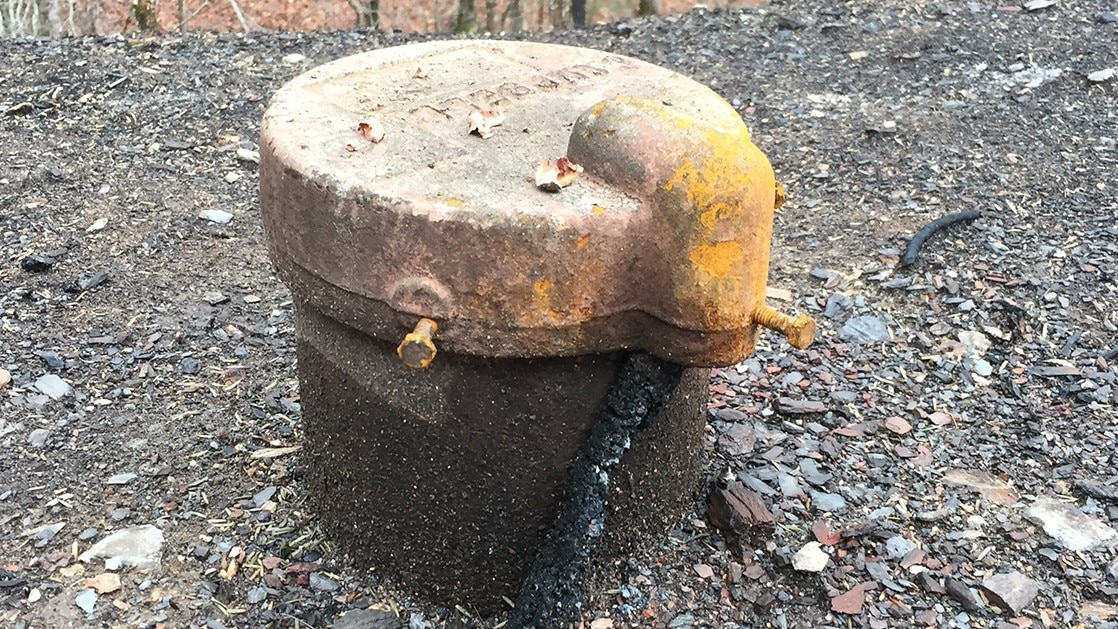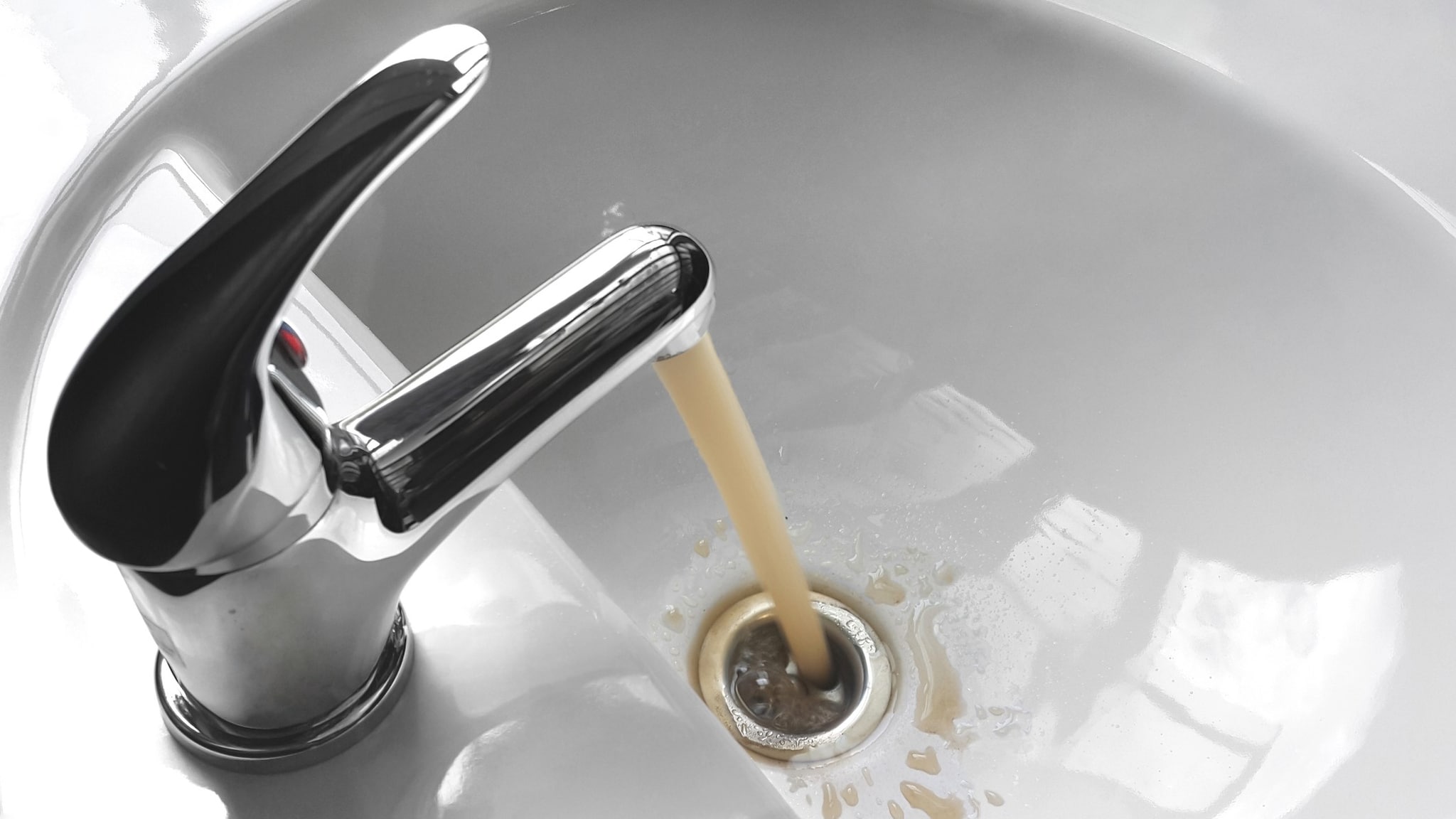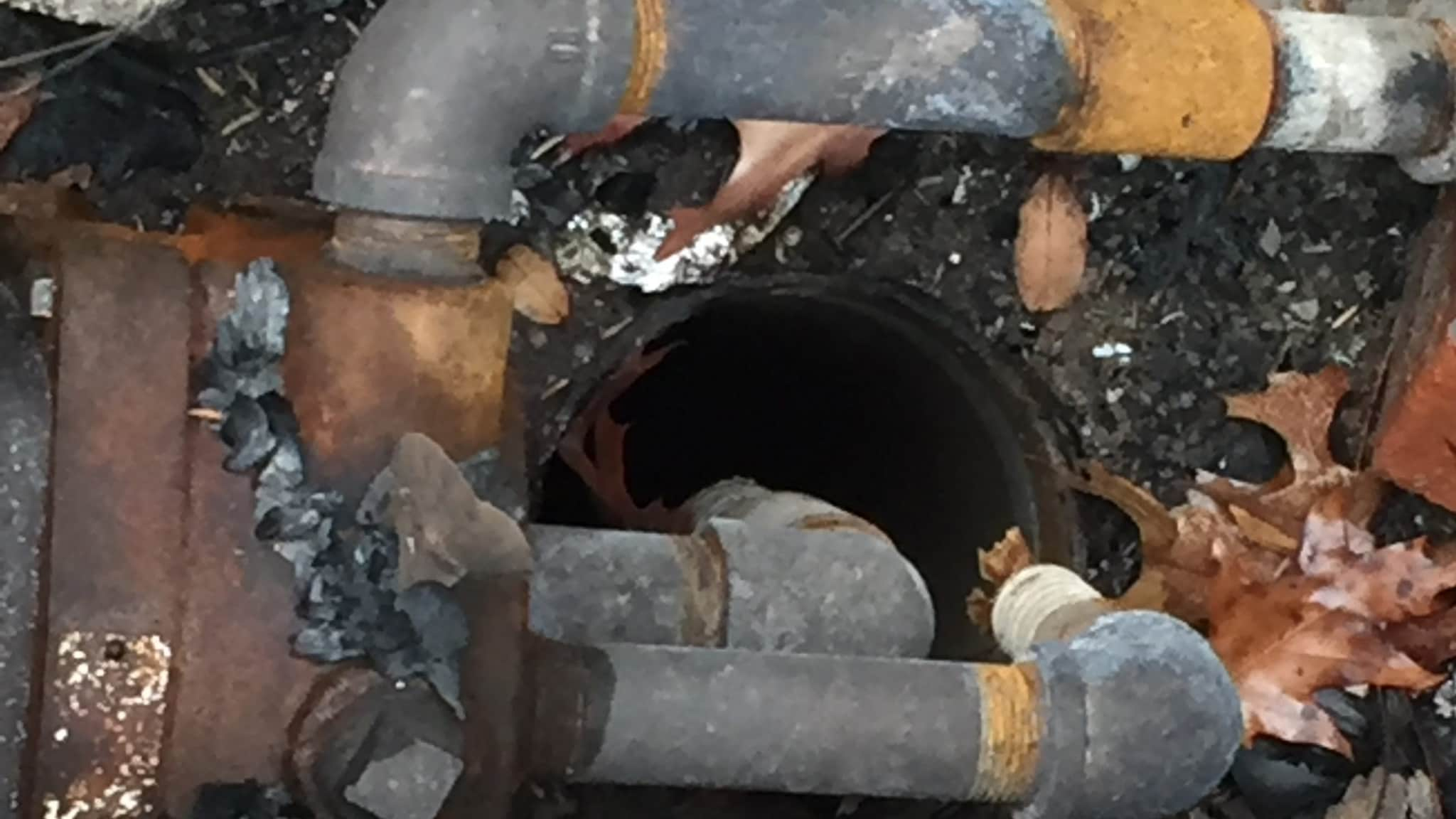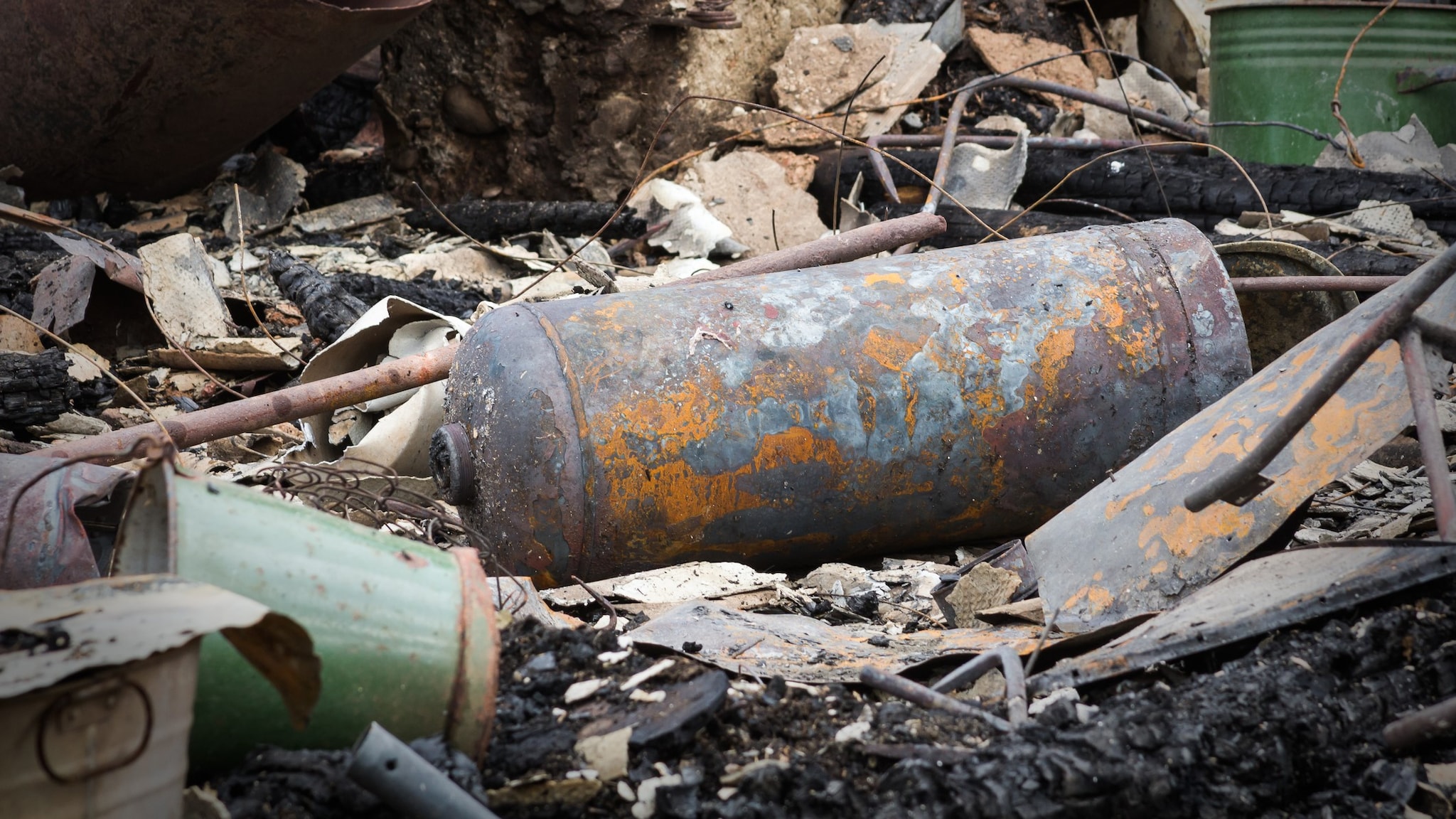At a glance
Health departments: learn about threats to well water after a wildfire and potential solutions to common problems. If you are a private well owner looking for help, talk to your local health department for guidance based on local conditions.

Wildfires and private wells
Wildfires can threaten private wells. After a wildfire, private wells can be contaminated and unsafe to use for drinking water and other purposes. Types of issues and solutions vary by geographic region. This page compiles practices from academic, state, and local programs addressing private wells.
Loss of power or water pressure
Loss of power or water pressure can lead to contaminated well water
If the home lost power, determine if the well lost pressure. This is important even if the power is now back on.
- Turn on a faucet in the home to see if water comes out.
- Observe whether water intermittently spurts out because of air escaping from the open faucet. Spurting water indicates a loss of pressure in the well and the household plumbing.
If the well lost pressure
- Inform residents NOT to drink the water until it has been tested.
- Test water for bacterial contamination at a minimum. Test for volatile organic compounds (VOCs), semi-volatile organic compounds (SVOCs), and other local contaminants of concern using a certified laboratory, if any of the following apply:
- There is a high amount of damage to well components (see page 2 of our assessment form).
- The well components are made of synthetic components (polyvinyl chloride [PVC], high density polyethylene [HDPE], or rubber).
- There is a high amount of fire damage in the area.
- There is a high amount of damage to well components (see page 2 of our assessment form).
- Prime the well pump.
- Disinfect* and flush the well. Consult with a well contractor if needed.
NOTE: Turn off power to the pump before inspecting to avoid electrical shock.
Even if the home still has power, it's important to see if the well has pressure.
- Turn on a faucet in the home. If the water comes out at steady flow, the well has pressure.
- Notice whether the water has a different color or odor than normal. For example, does it smell earthy, smoky, or burnt? If it does, the water may be unsafe use. Lack of odor does not mean the water is unaffected.

If the home has power and the well has pressure but the water smells or looks different
- Flush the water lines until the smell is gone and the color returns to normal. Lack of odor does not mean water is unaffected. Flow should be steady and uninterrupted.
- Inform residents NOT to drink the water until it has been tested.
- Test water for bacterial contamination at a minimum.
- Test for VOCs, SVOCs, and other local contaminants of concern using a certified laboratory if any of the following apply:
- There is a high amount of damage to well components (see page 2 of our assessment form).
- The well components are made of synthetic components (PVC, HDPE, or rubber).
- There is a high amount of fire damage in the area.
- Contact a licensed well contractor, electrician, or the power company to repair or replace any damaged components.
- There is a high amount of damage to well components (see page 2 of our assessment form).
NOTE: Turn off power to the pump before inspecting to avoid electrical shock.
If the home is still without power
- Consider using a generator to run the well if appropriate. A licensed well contractor, electrician, or power company should determine the proper generator size to avoid damage to the pumping system. Never use a generator inside, even if doors and windows are open. Use generators and any gas-powered equipment outside, at least 20 feet away from doors, windows, and vents.
- Disinfect* and flush the well.
NOTE: Turn off power to the pump before inspecting to avoid electrical shock.
Damaged well equipment, piping, and electrical components
Damaged well equipment, piping, and electrical components can also cause contamination
Check for visible damage to electrical wires, conduits, and connectors that supply power to the well. Look for charring or melting and notice any odor of burned connections.

Photo used with permission from the Tennessee Department of Health.
If wires, conduits, or connectors are damaged
- Contact a licensed well contractor, electrician, or the power company to repair or replace any damaged components.
- Do NOT handle or touch electrical wiring.
NOTE: Turn off power to the pump before inspecting to avoid electrical shock.
Check for damage to plastic (PVC, HDPE) pipes used to bring well water to the home, both above and below ground, where possible.
- Look for visible damage, like charring or melting.
- Notice any odors of burned plastic.
- See if water is leaking from the pipes or surfacing from an underground waterline leak.
- Consider SVOC or VOC testing as damage might not be detectable through the senses.
If plastic piping is damaged
- Contact a licensed well contractor, electrician, or the power company to repair or replace any damaged components.
- Disinfect* and flush well water.
- Since there is burn damage to well components and fire damage in the area, test for VOCs, SVOCs, and other local contaminants of concern using a certified laboratory.
Check for damage to the well house and equipment (for example, chlorinators, water softeners, filters, electronic controls, pressure tanks, overflow pipes, cisterns, and other equipment). Look for visible damage, like charring or melting, and any odor of burned equipment.
If there is damage to the well house and equipment
- Recommend the resident contact a licensed well contractor or driller to make repairs or replace damaged well components.
- Disinfect* and flush well water.
- Test for VOCs, SVOCs, and other local contaminants of concern using a certified laboratory if any of the following apply:
- There is a high amount of damage to well components (see page 2 of our assessment form).
- The well components are made of synthetic components (PVC, HDPE, rubber).
- There is a high amount of fire damage in the area.
- There is a high amount of damage to well components (see page 2 of our assessment form).
NOTE: Turn off power to the pump before inspecting to avoid electrical shock.
Affected areas near the home, including septic systems
Areas near the home, including septic systems, can affect water quality
Consider the possibility of damaged fuel and chemical storage facilities. Visually check for potential sources of contamination (for example, household fuels and chemicals, aboveground and belowground storage tanks, and spills of industrial chemicals or fuel).

If there is a chemical spill or other possible chemical contamination
- Make a note of the spill location.
- Work with the resident and a certified lab to determine what the water should be tested for (for example, petroleum products and other chemicals).
Check for signs of damage where the septic system is located.
- Observe whether plastic (PVC, HDPE) piping above ground, PVC risers/covers, cleanouts, vent pipes, and drain field inspection ports are melted or otherwise damaged.
- Look for evidence of vehicle traffic near the septic system, especially the drain field area.
- Look for damage where the septic system pipe enters the home. This could create a reverse flow problem.
If the septic system is damaged
- Discontinue or limit water use in the home until the system is inspected.
- Keep pets and people away from the septic system area until it is inspected.
- Contact a septic system professional to inspect the system.
Environmental health problem-solving considerations
Flushing
- When flushing the well, consider the potential of drawing contaminated water into the building.
- When flushing the well, be mindful not to overload a septic system.
- Consult with local environmental protection authorities if contaminants need special handling, such as VOCs and SVOCs.
Testing
- Consider using broad testing methods, such as EPA methods 502.2 or 524.2, that cover a range of contaminants (SVOCs, VOCs) potentially associated with fire impacts.
- Consider heavy metals testing (e.g., lead, copper, zinc, and iron). Other metals should be tested based on local concerns.
- Allow stagnation time before sampling. This can help detect contaminants from impacted plastic plumbing that could have leached into the water.
Explore more resources
- CDC rapid assessment form for wells affected by wildfire (CDC)
- Contact information for certification programs and certified laboratories for drinking water (Environmental Protection Agency, EPA)
- Disinfecting wells after a disaster (CDC)
- Hydrocarbons (Agency for Toxic Substances and Disease Registry)
- Information for the public about wildfires (CDC)
- Inorganic substances, including heavy metals (Agency for Toxic Substances and Disease Registry)
- National primary drinking water regulations (EPA) Note: these standards aim to protect public health by limiting the levels of contaminants in regulated community drinking water systems. They are often used for private wells in the absence of other specific standards.
- ToxFAQsTM for VOCs and SVOCs identified in water systems after a wildfire (Agency for Toxic Substances and Disease Registry), such as the following
- Benzene
- Methylene chloride
- Methyl ethyl ketone (2-Butanone)
- Methyl tert-butyl ether
- Naphthalene
- Styrene
- Toluene
- Vinyl chloride
- Xylene
- Benzene
- Volatile organic compounds (Agency for Toxic Substances and Disease Registry)
Learn more
Read more about private wells, contamination, and wildfires.
Center for Plumbing Safety at Purdue University. After a wildfire: Water safety considerations for private wells. West Lafayette, IN: Center for Plumbing Safety at Purdue University; 2021.
Draper WM, Li N, Solomon GM, Heaney YC, Crenshaw RB, Hinrichs RL, et al. Organic chemical contaminants in water system infrastructure following wildfire. ACS ES&T Water. 2022;2(2):357–66.
Haupert LM, Magnuson ML. Numerical model for decontamination of organic contaminants in polyethylene drinking water pipes in premise plumbing by flushing. J Environ Eng. 2019;145(7).
Isaacson KP, Proctor CR, Wang QE, Edwards EY, Noh Y, Shah AD, et al. Drinking water contamination from the thermal degradation of plastics: implications for wildfire and structure fire response. Environ Sci Water Res Technol. 2021;7(2):274–84.
Proctor CR, Lee J, Yu D, Shah AD, Whelton AJ. Wildfire caused widespread drinking water distribution network contamination. AWWA Water Sci. 2020;2(4):e1183.
Solomon GM, Hurley S, Carpenter C, Young TM, English P, Reynolds P. Fire and water: assessing drinking water contamination after a major wildfire. ACS ES&T Water. 2021;1(8):1878–86.
U.S. Environmental Protection Agency. Addressing contamination of drinking water distribution systems from volatile organic compounds (VOCs) after wildfires (4608-T), EPA 817-F-21-011. Washington, DC: U.S. Environmental Protection Agency Office of Water; 2021.
U.S. Environmental Protection Agency. Measurement of purgeable organic compounds in water by capillary column gas chromatography/mass spectrometry (method 524.2) EPA 600-R-95-131. Washington, DC: U.S. Environmental Protection Agency National Exposure Research Laboratory; 1995.
U.S. Environmental Protection Agency. Volatile organic compounds in water by purge and trap capillary column gas chromatography with photoionization and electrolytic conductivity detectors in series (method 502.2) EPA 600-R-95-131. Washington, DC: U.S. Environmental Protection Agency National Exposure Research Laboratory; 1995.
